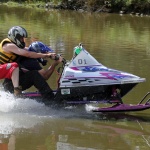The Florida Panther National Wildlife Refuge is a part of the United States National Wildlife Refuge System, situated in southwestern Florida, twenty miles east of Naples, in the upper section of the Fakahatchee Strand of the Big Cypress Swamp.
The 26,400-acre of land shelter was set up in 1989 under the Endangered Species Act by the US Fish and Wildlife Service, to secure the endagnered Florida panther, and also other at risk plant and animal species. The Florida panther is the main cougar species discovered east of the Mississippi River. The shelter is a piece of a system of private land and government controlled zones. The shelter is only a part of several other preserves that look after the welfare of the local wildlife. The others are Everglades National Park, Big Cypress National Preserve and Fakahatchee Strand State Preserve. Taking all things together, around 100 panthers live in the region, with less than twelve going through the shelter every month.
To ensure the panther and other jeopardized inhabitants, entrance to the general public is only accessible at the southeast corner of the shelter, on assigned climbing trails. Every other part must be seen via restricted visits.
Community access to the shelter has not been permitted since the asylum’s primary function is different from any other conventional park. External contamination would, for the most part, irritate the untouched lives of panthers or their prey. And that would be conflicting with the asylum’s purpose of giving panthers an ideal living space. In any case, the shelter staff and its coordinating teams have set up two climbing trails with a little parking area, but were made certain that the tours do not disturb the panthers.
For many years, towering cypress trees up to 130 feet tall and 25 feet in perimeter overwhelmed the scene of what is currently Florida Panther NWR. In light of the Second World War, logging of cypress trees all through the Big Cypress bowl begun in 1944. A normal of 1,000,000 board feet for each week was collected from the bogs that were used for railways. The logging operations begun in Fakahatchee Strand State Preserve and moved north through the shelter region.
By 1957, the remainders of the trees were logged, with the exception of those found in the Corkscrew Audubon Preserve. Gradually the cypress swamps have recuperated as another era of cypress replaced the fallen giants. A large number of the logging scars have recuperated in the course of recent decades. The old raised railroad beds are as yet used by shelter staff to get to segments of the sanctuary.
Instantly preceding shelter foundation, the land was possessed by the Collier family and was principally utilized for private game hunting leases and a pasture for cows. A couple of home destinations and hunting encampments were situated on the land. In 1989, the US Fish and Wildlife Service obtained the underlying 24,300 acres of land from the Collier family for $10.3 million dollars. In 1996, the preserve was extended to 26,400 acres of land with the expansion of more Collier family arrive through the Arizona-Florida Land Exchange Act of 1988.










